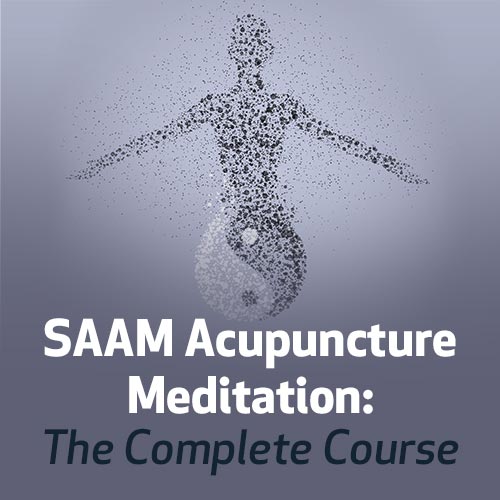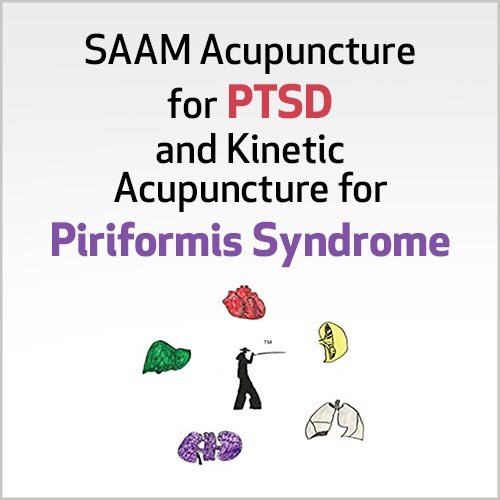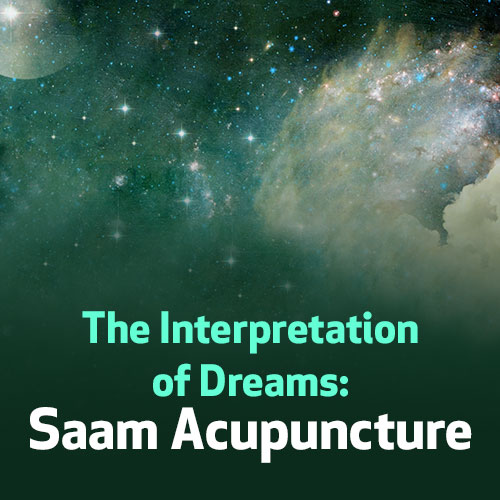Saam Acupuncture’s Three Levels of Human Needs and the Interpretation of Dreams: Case Studies of Freud and Jung
Saam Acupuncture’s Three Levels of Human Needs is a unique Five Element model of human motivation expressed in terms of satisfaction or dissatisfaction. As a branch of Organ Centered Consciousness, Saam’s Three Levels of Human Needs can be identified in dreams. It may be generally understood that humans have a desire to move from dissatisfaction to satisfaction. Thus in the lifelong, life cycle process of dreams one should move from themes of dissatisfaction to satisfaction. Presented herein are two case studies of dream interpretation from Sigmund Freud and Carl Jung.
Saam Acupuncture’s Three Level of Human Needs.
1st level of human needs - basic necessities – food, money, and material possessions
Satisfaction with these is associated with the Lung (Money, Material Possessions, as in the establishment of one’s homeland) and Spleen (Having enough Food for physical growth, comfort and safety).
Over satisfaction with Lung Material Possession is seen in hoarding behavior, which may stem from loneliness and lack of community. Over satisfaction with Spleen Food is seen in obesity.
2nd level of human needs – Relationships, Romantic and Sexual
Satisfaction with these is associated with the Heart (Platonic Family, Friend, Aesthetic) and Kidney (Sexual)
3rd level of human needs – Achievements, Prestige, Knowledge, Power
Satisfaction with these is associated with the Pericardium (Knowledge, Intellect) and Liver (Power, Prestige, and Fame)”
Over satisfaction of this level of human needs may be expressed in arrogant dismissiveness of powerful peoples, or over talkative, over informative, boorish behavior.[1]
It is interesting to note the similarities and differences of Saam’s Three Levels of Human Needs with Maslow’s Hierarchy of Human Needs. Both are models of human motivation, moving from a position of dissatisfaction to satisfaction. Each level of the models has correspondence to the other. The Five Element differentiation of Saam Acupuncture is a key departure point between the models.
Following is a representation of Maslow’s Hierarchy of Human Needs formulated by Abraham Maslow in his 1943 “A Theory of Human Motivation” in Psychological Review.
It can be fairly observed, the similarities between the levels of each of the models. Saam’s level one need for food and material possessions corresponds with the physiological and safety needs of Maslow. Saam’s level two need for relationship (platonic and sexual) corresponds with Maslow’s social needs. Saam’s level three need for recognition of one’s skills, talents, accomplishments, the performance therein, the accumulation and teaching of knowledge, correspond to Maslow’s Esteem and Self Actualization levels.
According to Maslow one must attain satisfaction in the lower levels before moving up to attain satisfaction in the higher levels. [2] In Saam there is no such vertical movement distinguished. One’s level of dissatisfaction or over satisfaction is identified and then acted upon with the tools, techniques, and education of Saam Acupuncture.
Following are two case studies from Sigmund Freud and Carl Jung using Saam Acupuncture’s Interpretation of Dreams according to the Three Levels of Human Needs.
The childhood hood dream of Carl Jung presents fascinating study and consideration in regards to dreams of children and the differences of dreams across life cycles. Saam Acupuncture’s Interpretation of Jung’s Dream identifies the element of Spleen Earth to be the dominant theme present in this dream, with interesting expressions of Liver Wood. Underlined are references to Spleen Earth.
“Jung’s earliest remembered dream, at age of three of four, was one he kept secret till his midsixties. This numinously tinged dream was situated in a meadow not far from his parents’ home.” “In the dream I was in this meadow. Suddenly I discovered a dark, rectangular, stone-lined hole in the ground… I ran forward curiously and peered down into it. Then I saw a stone stairway leading down. Hesitantly and fearfully, I descended. At the bottom was a doorway with a round arch, closed off by a green curtain….On this platform stood a wonderfully rich golden throne. I am not certain, but perhaps a red cushion lay on the seat. It was a magnificent throne, a real king’s throne in a fairy tale. Something was standing on it which I thought at first was a tree trunk twelve to fifteen feet high and about one and a half to two feet thick. It was a huge thing, reaching almost to the ceiling. But it was of a curious composition: it was made of skin and naked flesh, and on top there was something like a rounded head with no face and no hair. On the very top of the head was a single eye, gazing motionlessly upward…. Above the head, however was an aura of brightness. The thing did not move, yet I had the feeling that it might at any moment crawl off the throne like a worm and creep toward me. I was paralyzed with terror. At that moment I heard from outside and above me my mother’s voice. She called out, “Yes, just look at him. That is the man-eater.” That intensified my terror still more, and I awoke sweating and scared to death…. What was he to make of it? The phallus… a subterranean god “not to be named”…an initiation into the secrets of the earth… that fearful tree of my childhood dream… revealed as the breath of life, the creative impulse…What happened then was a kind of burial in the earth, and many years were to pass before I came out again. Today I know that it happened in order to bring the greatest amount of light into the darkness. It was an initiation into the realm of darkness. My intellectual life had its unconscious beginnings at that time.” [3]
The Spleen is Level One Human Need for food. This includes the responsibility of gathering and planning for food such as parents providing for children. The Spleen and need for food may be especially dominant in children who by their vulnerability (being small in physical stature) need food to grow big to overcome the multitude of threats (imaginary and real) to their being.
It is hypothesized from Jung’s dream that fear and nightmares are common in dreams of children. That these scary dreams may have particular expressions of Spleen Earth such as themes of graves, basements, and of descending downwards.
Liver Wood is also referenced in the green colored curtain and initial impression of a tree trunk. Could this be an expression of Liver Wood overacting on Spleen Earth per Five Element Theory?
Sigmund Freud’s patient ‘Dora’ was a very famous dream case study in the early 20th century. Dora (Freud’s pseudonym for her) was 18 years old when she consulted with him. Her initial complaint was Aphonia (loss of voice). From later in the study we learn the patient also presented with a cough that must have been of a persistent nature.
It is interesting to match the physical symptoms of Dora with the Five Element patterns expressed in her dreams. Aphonia, the inability to speak may be diagnosed by either Heart or Lung Qi deficiency in Acupuncture Medicine. The tongue is the organ associated with the Heart and terminal point of the channel. The breath of Lungs powers the voice. A persistent cough may be Lung Qi deficiency. A primary hypothesis question of this dream is “Are there psycho somatic correspondences with dreams?”
In Saam Acupuncture’s Three Levels of Human Needs, the Lungs pertain to Level One Need for material possessions and the establishment of one’s homeland. The Heart pertains to Level Two Need for platonic family friend relationships. We of course don’t know the complete circumstances of Dora’s young life at this point but clues are given. Her parents had a loveless relationship, with potential sexual abuse from the neighboring husband.
Taken from Wikipedia
“Dora lived with her parents, who had a loveless marriage, but one which took place in close concert with another couple, Herr and Frau K. The crisis that led her father to bring Dora to Freud was her accusation that Herr K had made a sexual advance to her, at which she slapped his face - an accusation which Herr K denied and in which her own father disbelieved…
Dora recounted two dreams to Freud. In the first:
[a] house was on fire. My father was standing beside my bed and woke me up. I dressed quickly. Mother wanted to stop and save her jewel-case; but Father said: 'I refuse to let myself and my two children be burntfor the sake of your jewel-case.' We hurried downstairs, and as soon as I was outside I woke up. The second dream is substantially longer:
I was walking about in a town which I did not know. I saw streets and squares which were strange to me. Then I came into a house where I lived, went to my room, and found a letter from Mother lying there. She wrote saying that as I had left home without my parents' knowledge she had not wished to write to me to say Father was ill. "Now he is dead, and if you like you can come." I then went to the station and asked about a hundred times: "Where is the station?" I always got the answer: "Five minutes." I then saw a thick wood before me which I went into, and there I asked a man whom I met. He said to me: "Two and a half hours more." He offered to accompany me. But I refused and went alone. I saw the station in front of me and could not reach it. At the same time, I had the unusual feeling of anxiety that one has in dreams when one cannot move forward. Then I was at home. I must have been travelling in the meantime, but I knew nothing about that. I walked into the porter's lodge, and enquired for our flat. The maidservant opened the door to me and replied that Mother and the others were already at the cemetery.” [4]
These two dreams represent dissatisfaction and unpleasantness in Dora’s young life. There is expressed uncertainty in her level one human need (Lung) for material possession and establishment of homeland (represented by the strange town, her mother’s jewel box, her house, the elusive station, and of learning of her father’s death and “mother and the others at the cemetery”). It is important to note that friends and family also make up one’s community, which is part of one’s homeland. The loss of such people affects the Lung, triggering grief and sadness. We can be grief stricken when we lose a part of our homeland.
The Heart Level Two relationship is also expressed when one understands that Dora’s parents were in a ‘loveless’ relationship. Did they pay attention to and love Dora? Her father did not believe her side of the sexual abuse story.
There appears to be a deficit (dissatisfaction) in both Level one Lung and Level Two Heart Needs for Dora. One could almost diagnose her from this case study with Lung and Heart Qi deficiency. Deficiency in the upper jaio affecting loss of voice. According to Five Element patterns reflected in Dora’s dreams it does appear to suggest that there are psycho somatic correspondences between dreams and health.
Conclusion
The Interpretation of Dreams is an important branch of Saam Acupuncture’s ‘Organ Centered Consciousness’. Using the tools of Saam Acupuncture and Meditation upon the identified organ and human need expressed in the dream one can grow and heal from a position of dissatisfaction to satisfaction. Saam Acupuncture’s Interpretation of Dreams based on the Three Levels of Human Needs has the potential for multi-dimensional and fascinating opportunities of study.
Other Courses By This Teacher
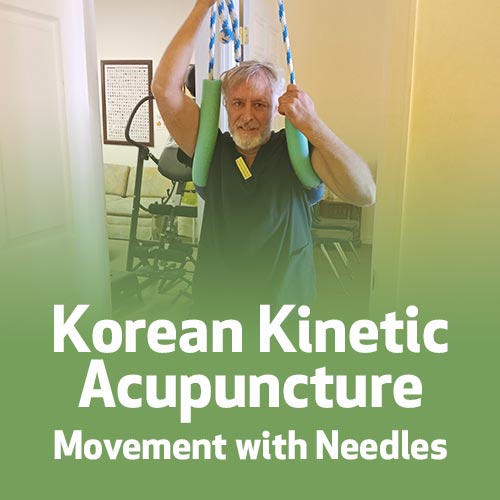
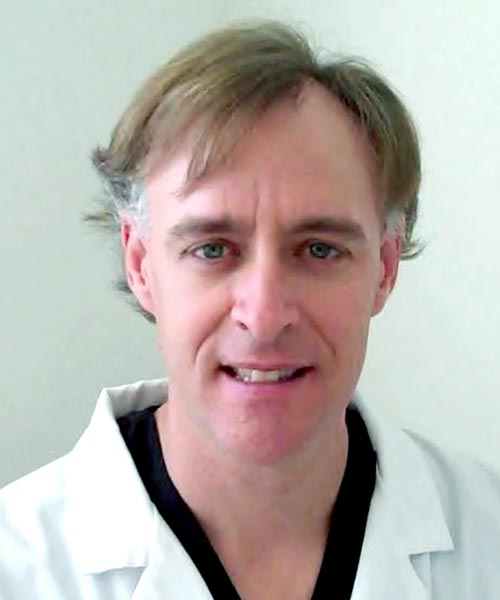
Korean Kinetic Acupuncture, Movement with Needles
Acupuncture's Next Generation Trigger Point Protocol
with Evan Mahoney
See In StoreOverview
Please Note: This course is presented in a reading-first format, where the teacher walks you through and explores a body of written work.
This 6 hour course will help you master Muscle Tendon Pain and Pathology. Featuring the Korean protocols of VST (Vertex Synchronizing T) and Kinetic Acupuncture. Taught be Dr. Evan Mahoney, student of both Dr.'s Jonghwa Lee and Hyungsuk Choi.
This class features Dr. Jonghwa Lee's VST Acupuncture which is a trigger point protocol based on Range of Motion Analysis and muscle shortening affecting (in this video) the neck and shoulder, lower back and hip vertexes.
We feature all the range of motion tests and identified shortened muscles needed to be treated with VST acupuncture. The student will learn and understand agonist and particularly antagonist muscles and how they affect alignment of joint, structures, and tensegrity. The student will also learn the many pathologies of muscle shortening due to presence of knots (trigger points) in the muscles.
Featuring also Dr. Hyungsuk Choi's Kinetic Acupuncture the student will learn how to treat trigger point pathology using movement exercises with acupuncture needles in place. This class features Kinetic Acupuncture procedures for the hands, wrists, fingers, elbows, shoulders, neck, toes, ankles, feet, knees, hips (lateral and medial), and lower back.
Using these protocols the student will become a master of pain and pathology. The student's confidence, skill, and reputation will be enhanced as they deliver on their favorable prognosis given to patients, thanks to these procedures.
Learning Objectives
- The student will be able to identify structural imbalance to to muscle trigger points.
- The student will understand how trigger points (knots) in muscles leads to pain and pathology.
- The student will be able to treat structural imbalance by using trigger point strategies of VST and Kinetic Acupuncture.
- The student will improve their diagnostic and prognostic abilities to further gain confidence, esteem, and reputation in the eyes of their patients.
- The student will understand the mechanism of Agonist and Antagonist in muscle movements.
Your Teacher

Evan Mahoney
Evan Mahoney is a Doctor of Acupuncture and Oriental Medicine. Author of the Saam Medical Meditation Book series and Korean Kinetic Acupuncture Trigger Point Acupuncture series.
